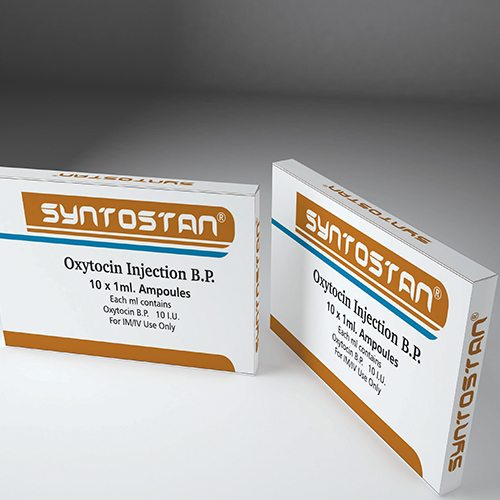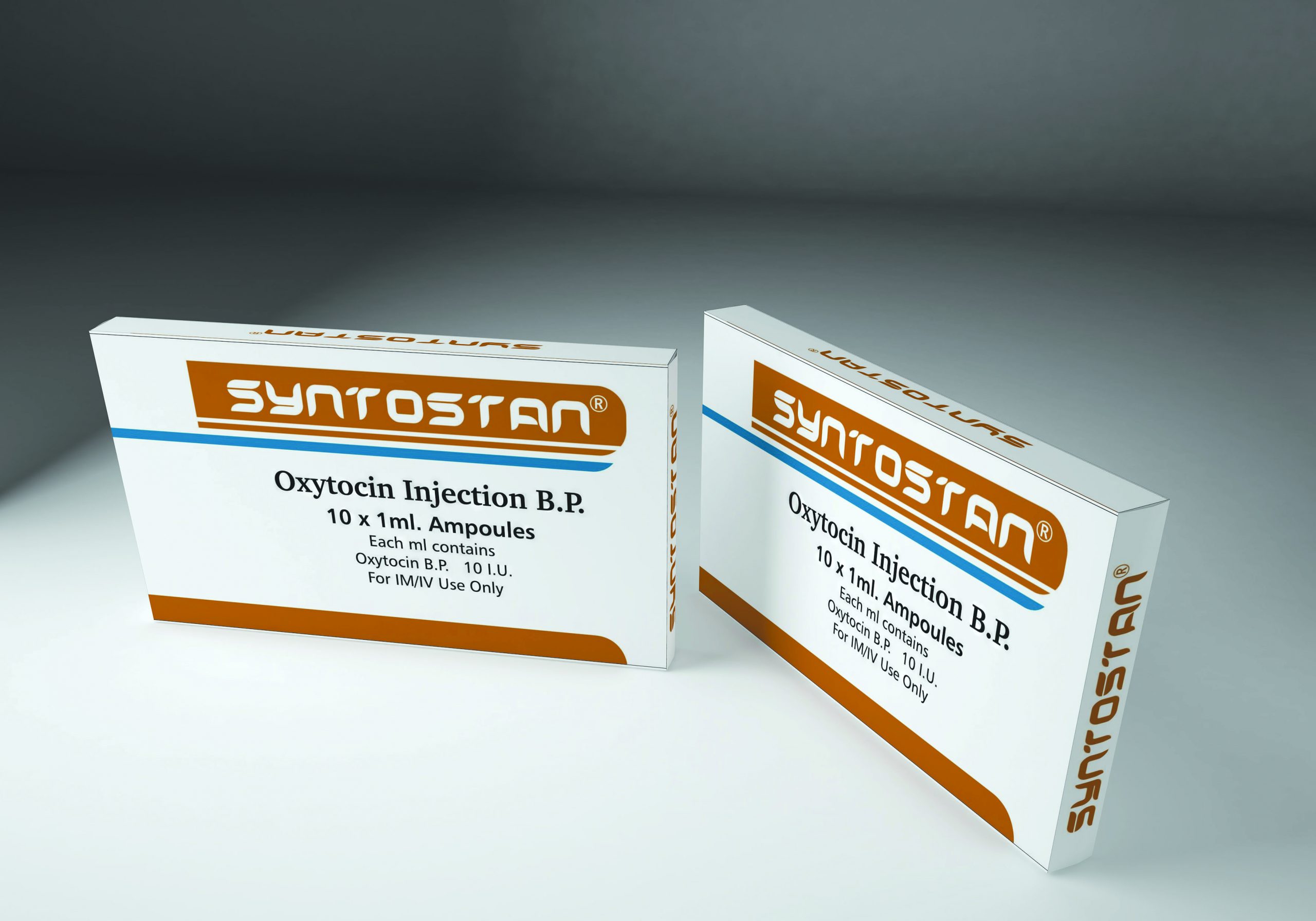Syntostan
Syntostan is an Oxytocin injection that can be used when labor needs to be induced or during labor if the contractions are not strong enough to progress normally. It is also used to control bleeding after childbirth.Oxytocin also can help to stimulate contractions if there is an incomplete abortion or miscarriage.
Therapeutic Class
Dosage Form & Composition
Injection :Each Stntostan ml contains Oxytocin 10 I.U/mL.
Pharmacology
Oxytocin is a natural hormone produced in the brain that causes the uterus to contract. Oxytocin injection (synthetic) acts on the smooth muscle of the uterus to stimulate contractions; response depends on the uterine threshold of excitability. It exerts a selective action on the smooth musculature of the uterus, particularly toward the end of pregnancy, during labor and immediately following delivery.
Oxytocin stimulates rhythmic contractions of the uterus, increases the frequency of existing contractions and raises the tone of the uterine musculature.
Synthetic Oxytocin does not possess the cardiovascular effects, such as elevation of blood pressure, as exhibited by vasopressin found in posterior pituitary injection.
Indications
Oxytocin can be used when labor needs to be induced or during labor if the contractions are not strong enough to progress normally. It is also used to control bleeding after childbirth.
Oxytocin also can help to stimulate contractions if there is an incomplete abortion or miscarriage.
Contra-indications
This medication is contraindicated in cases where there is Cephalopelvic disproportion (CPD) (when a baby’s head or body is too large to fit through the mother’s pelvis); abnormal presentation of the fetus, excessive amniotic fluid; in women who have had multiple pregnancies, previous caesarian section or other uterine surgery; hyperactive or hypertonic uterus, uterine rupture; in cases where vaginal delivery is contraindicated (such as invasive cervical cancer, active genital herpes, prolapse of the cord, cord presentation or total placenta previa); fetal distress where delivery is not imminent; severe pre-eclamptic toxaemia (pregnancy induced high blood pressure).
Precautions/Warnings
- Stop the drug immediately if the uterus contracts excessively or the fetus is in distress.
- Intramuscular administration is not regularly used due to unpredictable effects of this medication.
- Do not use it for prolonged periods in resistant uterine inertia, severe pre-eclampsia (hypertension), or severe CV disorders, hyperhydration.
- Monitor neonates and mother’s heart rate, maternal BP and uterine motility, fluid intake and output during treatment.
Interactions
Severe hypertension has been reported when Oxytocin was given three to four hours following prophylactic administration of a vasoconstrictor in conjunction with caudal block anesthesia.
Cyclopropane anesthesia may modify Oxytocin’s cardiovascular effects, so as to produce unexpected results such as hypotension. Maternal sinus bradycardia with abnormal atrioventricular rhythms has also been noted when Oxytocin was used concomitantly with cyclopropane anesthesia.
Adverse Effects
Genitourinary: Rupture of uterus, increased tone of uterine muscle.
Fetus or neonate: Jaundice; abnormal heart rhythm, slow heart beat, brain, brain damage, seizure, eye bleeding, low APGAR score. (Activity, Pulse, Grimace, Appearance, and Respiration).
Mother: Low blood pressure, fast heart rate, nasal irritation, runny nose, tears (following nasal admin); uterine bleeding, violent contractions, increased tone of uterus and spasm, nausea, vomiting.
Heart: Premature ventricular contractions, hypertensive episodes.
Gastrointestinal: Nausea and vomiting.
Metabolic-Nutritional: Water intoxication with convulsion, coma, and death.
Miscellaneous: Severe allergic reactions, absence of fibrinogen in the plasma that could be fatal, blood clot in pelvic region.
Dosage & Administration
Intravenous:
The recommended dose is 1 to 2 mU/min.
Dosage should be adjusted at half an hour to hourly intervals. Max: 32 mU/min.
Postpartum haemorrhage: 10 to 40 mU by infusion at a rate to control uterine atony.
Adjunct in abortion: The recommended dose is 10 to 20 mU/min; max. 30 IU.







Reviews
There are no reviews yet.